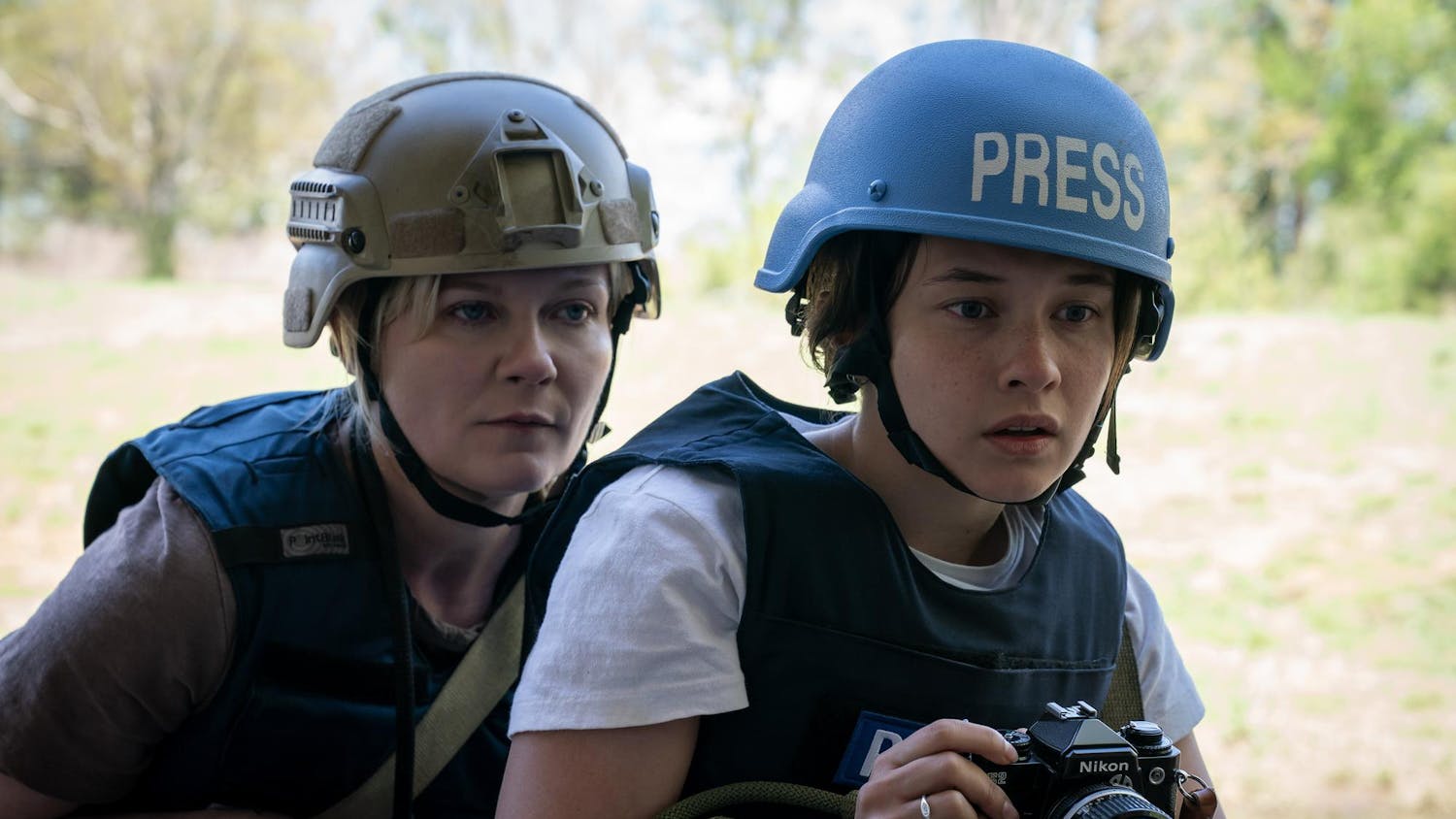The “China Remixed” initiative by the Arts and Humanities Council introduced a video project experience, by visiting video artist Isaac Leung, this month.
The process of compilation for the video montage, or "videotage", “Remixing China through Video Art” spanned several months, and Leung spoke Feb. 15 about the project in a curatorial talk.
“This is the first time I have done a project in public screens on a campus and we have a specific audience — students and faculty — who are from diverse places,” Leung said. “Automatially including students from China, Hong Kong and Singapore, it’s interesting to see how different communities react to these complex notions of Chineseness.”
The project, which was already established as an art form in Hong Kong, came to Bloomington when Media School associate professor Stephanie De Boer went to Hong Kong last year and discussed the idea with Leung. Arthur Liou, IU professor in the School of Art and Design, acted as artistic consultant for the film-based project.
De Boer, also a producer on the Bloomington project, was familiar with Leung’s work with Videotage in Hong Kong.
“I came to Isaac with the idea of producing a dialogic exhibition of video art — one that contains multiple perspectives and a multitude of differently located stories, and thus one that provokes questions concerning what Chinese video art might be,” De Boer said.
The collection of montages, an international collaborative exchange of video art from Hong Kong, Taiwan, Mainland China and beyond, will be broadcast across campus through March 10 in locations such as Franklin Hall, the Scholars Commons and the IMU Starbucks.
There is an interesting juxtaposition between the perspectives from mainland China and some of the other locations from which artists contributed their video projects, Leung said.
“For example, in Mainland China, artists are concerned about very big topics such as cultural evolution or economic reform,” Leung said. “In Hong Kong or Taiwan, artists take a more personal approach, for example, with personal stories about families, which leads to much bigger kind of questions or critical issues about Chinese culture.”
Leung said he hopes the videotages playing on the screens will help to facilitate public dialogue on the complex issues at play for both Chinese in China and across diaspora communities.
“It’s kinds of interesting to subvert the spatial formality, where the screens are usually only showing news and marketing materials of the University,” Leung said. “By interacting or seeing these complex moving images, that would create a new experience for the students. That’s quite an interesting experiment — to see how communities would react.”
De Boer said the idea behind putting the project on multiple screens around campus was multi-faceted.
One benefit to displaying the videos in this way is that students and faculty would be interacting with these spaces on a daily basis.
“On the other hand, I’m very interested in how we can shift and transform our increasingly screened environments,” De Boer said. “On our campus, the default mode for public screen use is to convey information. Efficiency in conveying information is their predominant value on campus, but what else can these screens be used for?”
De Boer said she hopes this is the beginning of a prolonged partnership with the project and Leung.
“As for Isaac himself, I’m looking forward to seeing how our collaboration can continue into the future, what becomes of this exhibition and how it might be a platform for future endeavors," De Boer said. "I think that this is the first time for Isaac to curate an exhibition for a campus space, so this is interesting.”






